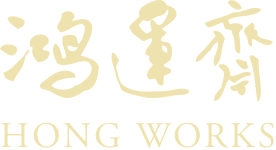Follow Us

Follow Us

The emblem of the 2008 Beijing Olympics "Chinese Seal • Dancing Beijing" made Chinese seal culture known to the world for the first time. In fact, Chinese seal culture can be traced back to the Shang Dynasty more than 3,000 years ago. The combination of seals and collecting to form China's unique "collection seal culture" flourished in the Tang Dynasty and reached its peak in the Song Dynasty. After the Song Dynasty, all literati and scholars had several elegant and exquisite collection seals for appreciating calligraphy and painting, leaving red clay marks.
Collection seals can be roughly divided into two categories: one is used for calligraphy and painting appreciation, authentication and collection; the other is used for book and classic collection. Since the Tang and Song dynasties, the same calligraphy and painting has been appreciated and stamped by collectors of successive dynasties, forming an orderly inheritance seal system. Thus, collection seals have also become an artistic element for authenticating the authenticity of calligraphy and painting.
Collection seals, as a unique elegant interest in Chinese collection culture, have two pleasures: "the pleasure of stamping" and "the pleasure of handling".
Stamping collection seals is a ritual for collectors to appreciate artworks, an eternal praise for beauty. There are many considerations for stamping collection seals: fewer is better than more, smaller is better than larger, with the principle of not destroying the original work's charm. Some great collectors, having reached perfection in form, seal text, position, ink pad, and technique, actually add beauty to the original work. For example, in Feng Ben's "Orchid Pavilion Preface", Emperor Zhongzong Li Xian's "Shenlong" seal was stamped with great skill - first, the seal size was appropriate, and second, it was stamped at the beginning of the Orchid Pavilion Preface text, befitting the emperor's status. Therefore, Feng Ben's "Orchid Pavilion Preface" is also called the "Shenlong Edition". In contrast, Emperor Qianlong's seals on this edition appear vulgar and ostentatious, ridiculed by later generations as "putting dung on Buddha's head", making him a laughingstock. This shows that "the pleasure of stamping" and cultural foundation complement each other.
The handling of collection seals also has many considerations, often making people enjoy it endlessly. In terms of materials, besides the famous "Four Great Seal Stones" - Shoushan stone, Qingtian stone, Changhua stone, and Balin stone, there are also gold, silver, copper, jade, glass, etc. Among them, jade seals have the highest status because all imperial seals are made of jade. In terms of craftsmanship, superb seal script, ingenious seal inscriptions, rare and precious seal albums, and exquisite seal decorations are all inexhaustible sources of "the pleasure of handling".
In 2020, Hongworks once again innovated on the basis of tradition, allowing artworks such as purple clay and porcelain that could not be stamped before to also enjoy this elegant pleasure. Hongworks provides each limited edition collection with a uniquely designed collection certificate, reserving space on this certificate for the collection's successive owners to stamp their collection seals. For the convenience of collectors, Hongworks has also created a series of collection seals. Hongworks' collection seals are mainly made of jade, noble and elegant, full of spirituality, mostly crafted by jade carving masters, specifically providing customization services for customers.
Easter Egg: Collectors who join via WeChat and successfully activate their first certificate will have the chance to receive a zodiac collection seal and free custom engraving service.

©Hongworks. All Right Reserved. 沪ICP备08106949号
 Public Security Record: 31010102006194
Public Security Record: 31010102006194


